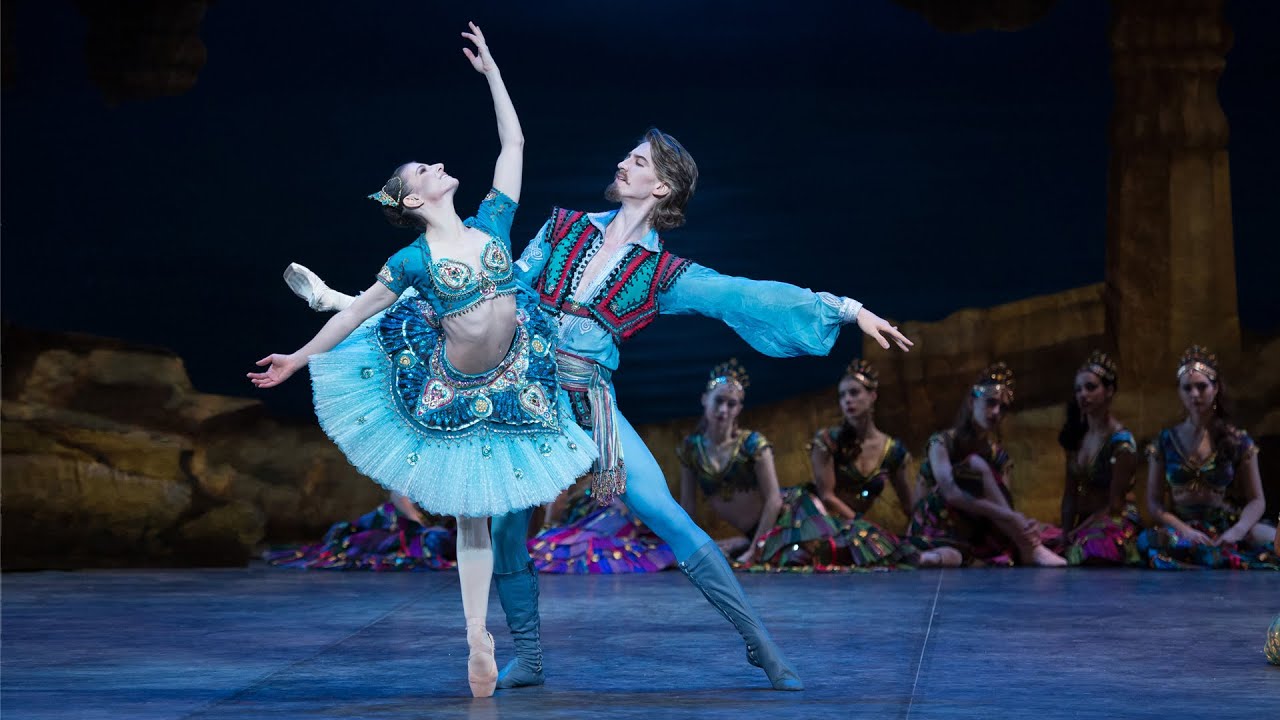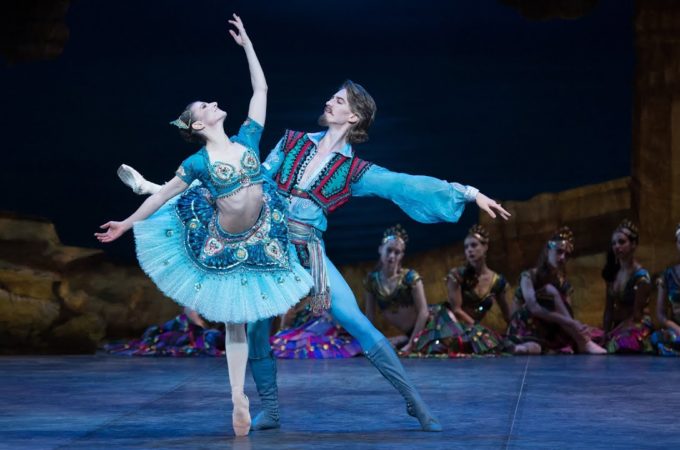
Tamara Rojo was, for many years, one of the Royal Ballet’s foremost principal dancers. She has proved equally surefooted as the newly ensconced director of English National Ballet. After an initial season of smartly programmed triple bills, Le Corsaire is her first commissioned work, a way of throwing down the gauntlet, announcing that ENB is playing in the big league. This full-length work from the classical tradition showcases her new star, Alina Cojocaru, whom Rojo adeptly poached after that luminous dancer’s abrupt and messy departure from the Royal Opera House.
Rojo has said that she chose this work in part because it is not in the repertory of any other British company. It can be, as such, “owned” by ENB. And that it has three, rather than the more conventional one, virtuoso male roles was no doubt a factor too. La Bayadère, a similar choice, is regularly danced by the Royal, and has far fewer soloist parts.
The choreography is nominally by Petipa, but much of it is in reality the work of Konstantin Sergeyev, with the famous pas de trois (usually performed in galas as a pas de deux) choreographed for the virtuoso Vakhtang Chabukiani in the 1930s. Anna-Marie Holmes, who mounted this production, has smoothed out many of the bumps between styles, and the dance flows well – the romantic pas de deux for Medora (Cojocaru) and Conrad (Vadim Muntagirov) that follows the more athletic pas de trois gives Act Two, in particular, a depth and richness that are relished by Cojocaru and Muntagirov (with, in the pas de trois, the excellent Junor Souza as Ali; he is now not only stylishly virtuosic, but has an elegance and fineness of bearing that mark him out as something special). The delicate “Jardin Animé” classical scene in Act Three, when the evil pasha (the splendid Michael Coleman) dreams that his concubines have become a dancing garden, highlights the delightfully precise Shiori Kase, a perfect Petipa heroine.
Rojo has also roped in Hollywood, in the person of the designer Bob Ringwood (Empire of the Sun and the Batman franchise are among his credits). All too often at the moment, theatre or film designers are asked to produce ballet without any experience of the requirements of this different art form, and their sets and costumes impede rather than impel the evening. Ringwood has the background in performance art (Swan Lakes and a Raymonda), and his designs are accomplished, drawing on Bollywood as well as nineteenth-century pastiche Orientalism in art and architecture to create what seems an oxymoron, a coherent fantasy-land. (Special mention must be made for the zenana of Act Three, which encloses the concubines at the end of the “Jardin Animé”: both frightening and elegant, a really efficient piece of staging.)
But there are downsides to Corsaire that are difficult to overlook. Artistically, the libretto and the score are highly problematic. The title and the characters’ names are from Byron, but the plot is standard pirate abduction-rescue melodrama fodder, repeated over and over to permit lots of dancing. Meanwhile, the score is a patchwork, from good composers on a bad day (Delibes) to adequate (Adolphe Adam, Minkus), to bad-to-terrible (Cesare Pugni, Drigo, Yuli Gerber, Albert Zabel, Prince Pyotr II van Oldenburg and Baron Boris Fitinhof-Schnell; and, although ENB doesn’t list him, I think the work of Prince Nikita Trubetskoi also makes an appearance).
Ultimately, even the music pales into insignificance when considering the problems of the plot. For it is impossible to overlook the fact that Le Corsaire is about slavery, about selling people (mostly women) for cash. Holmes has carefully removed the anti-Semitic stereotypes that continue to linger in the Russian versions: no longer are the slavers hook-nosed, but now “merely” avaricious. But she cannot omit the selling itself: it is Corsaire’s core. Transforming the pasha from despot to comic character seems sensible, but do we really want to laugh sympathetically with a slave-owner? And while the production works hard to allow us to think the pirates are “good” while the slavers are “bad”, the plot does not really allow it. Medora begs Conrad to release the slaves his pirate band has captured, which he does, but she, and everyone else on stage, is apparently comfortable with him as the owner of the slave Ali.
How classics of previous ages are reinterpreted to meet the values of our times is always a renegotiation: we no longer watch blacked-up Othellos, and Shylock is a perennial problem. Yet somehow these questions are not being considered in dance. Is it the lack of language that makes the performances seem other-worldly, not part of our own moral universe? I don’t know what the answer is, but I am concerned that no one, ENB included, appears to think that there is a need to ask the questions.
Published in the TLS, 16 January 2014
